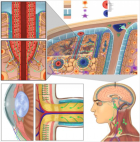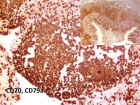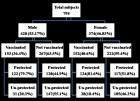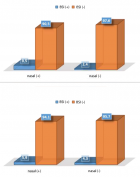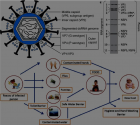Abstract
Review Article
Role of the Kidneys in the Regulation of Intra-and Extra-Renal Blood Pressure
Seriki A Samue*, Adebayo O Francis and Odetola O Anthony
Published: 17 July, 2018 | Volume 2 - Issue 1 | Pages: 048-058
Hypertension is one of the most common chronic diseases of human, affecting more than one billion people worldwide. When it becomes chronic, hypertension leaves behind cardiac hypertrophy, heart failure, stroke, and kidney disease, resulting in substantial morbidity and mortality. Treatments that effectively reduce blood pressure can prevent these complications. Abnormalities in the production of urine by the kidneys have been implicated in increased vascular resistance, leading to high blood pressure and increased cardiac mass. By matching urinary excretion of salt and water with dietary intake, balance is usually attained, thereby maintaining a constant extracellular fluid volume and blood pressure. Based on the capacity for the kidney to excrete sodium, this blood pressure-altering mechanism should have sufficient advantage to limit intravascular volume and consequently lower blood pressure in response to a range of stimuli from elevated heart rate to increase peripheral vascular resistance. A major determinant of the level of intra- and extra- renal blood pressure is therefore sodium handling, and it is controlled by complex physiological mechanism by hormones, inflammatory mediators, and the sympathetic nervous system. Homoeostasis and favourable influence sodium balance are a basic mechanism of efficacy for diuretics and dietary sodium restriction in hypertension. Renin Angiotensin System (RAS) inhibitors, vasodilators, and β-blockers work to facilitate pressure-natriuresis. Also, WNK signaling pathways, soluble inflammatory mediators, and pathways regulating extra-renal sodium disposition may be the focus towards elimination of sodium and reducing blood pressure in hypertension.
Read Full Article HTML DOI: 10.29328/journal.ach.1001011 Cite this Article Read Full Article PDF
Keywords:
Hypertension; Renin Angiotensin System; Natriuresis; Sodium balance homeostasis
References
- Osborn JW, Fink GD, Kuroki MT. Neural mechanisms of angiotensin II-salt hypertension: implications for therapies targeting neural control of the splanchnic circulation. Curr Hypertens Rep. 2011; 13: 221-228. Ref.: https://tinyurl.com/y8axh8v9
- Guyton AC. Blood pressure control -- special role of the kidneys and body fluids. Science. 1991; 252: 1813-1816. Ref.: https://tinyurl.com/y8fxexxe
- McCurley A. Direct regulation of blood pressure by smooth muscle cell mineralocorticoid receptors. Nat Med. 2012; 18: 1429-1433. Ref.: https://tinyurl.com/ybqzj4mf
- Dahl LK, Heine M, Thompson K. Genetic influence of the kidneys on blood pressure. Evidence from chronic renal homografts in rats with opposite predispositions to hypertension. Circ Res. 1974; 40: 94-101. Ref.: https://tinyurl.com/ycvplgse
- Matsusaka T, Niimura F, Shimizu A, Pastan I, Saito A, et al. Liver angiotensinogen is the primary source of renal angiotensin II. J Am Soc Nephrol. 2012; 23: 1181-1189. Ref.: https://tinyurl.com/y7g4q6vp
- Lawes C M, Vander Hoorn S, Rodgers A, International Society of Hypertension. Global burden of blood-pressure-related disease, 2001. Lancet. 2008; 371: 1513-1518. Ref.: https://tinyurl.com/ycahczth
- Wolf-Maier K, Cooper RS, Banegas JR, Giampaoli S, Hense HW, et al. Hypertension prevalence and blood pressure levels in 6 European countries, Canada, and the United States. JAMA. 2003; 289: 2363-2369. Ref.: https://tinyurl.com/yc2wugnx
- Gu Q, Burt V L, Dillon C F, Yoon S. Trends in antihypertensive medication use and blood pressure control among United States adults with hypertension: The National Health And Nutrition Examination Survey, 2001 to 2010. Circulation. 2012; 126: 2105-2114. Ref.: https://tinyurl.com/yb6cmatp
- Hani MW, Stephen CT. The role of the kidney in regulating arterial blood pressure. Nat Rev Nephrol. 2012; 8: 602-609. Ref.: https://tinyurl.com/y9jfdefu
- Matchar DB, McCrory DC, Orlando LA, Patel MR, Patel UD, et al. Systematic review: comparative effectiveness of angiotensin-converting enzyme inhibitors and angiotensin II receptor blockers for treating essential hypertension. Ann Intern Med. 2008; 148: 16-29. Ref.: https://tinyurl.com/y7zxfcr4
- Le TH, Coffman TM. Targeting genes in the renin-angiotensin system. Curr Opin Nephrol Hypertens. 2008; 17: 57-63. Ref.: https://tinyurl.com/ycprl2fd
- Hall JE. Control of sodium excretion by angiotensin II: intrarenal mechanisms and blood pressure regulation. Am J Physiol. 1986; 250: R960-R972. Ref.: https://tinyurl.com/y8rhrkfy
- Kobori H, Nangaku M, Navar LG, Nishiyama A. The intrarenal renin-angiotensin system: from physiology to the pathobiology of hypertension and kidney disease. Pharmacol Rev. 2007; 59: 251-287. Ref.: https://tinyurl.com/yd4qe48e
- Navar LG, Lewis L, Hymel A, Braam B, Mitchell KD. Tubular fluid concentrations and kidney contents of angiotensins I and II in anesthetized rats. J Am Soc Nephrol. 1994; 5: 1153-1158. Ref.: https://tinyurl.com/y8zz6bac
- Navar LG, Harrison-Bernard LM, Wang CT, Cervenka L, Mitchell KD. Concentrations and actions of intraluminal angiotensin II. J Am Soc Nephrol. 1999; 10: S189-S195. Ref.: https://tinyurl.com/ydy6nvlk
- Gonzalez-Villalobos RA, Billet S, Kim C, Satou R, Fuchs S, et al. Intrarenal angiotensin-converting enzyme induces hypertension in response to angiotensin I infusion. J Am Soc Nephrol. 2011; 22: 449-459. Ref.: https://tinyurl.com/y9wvwdm8
- Gonzalez-Villalobos RA, Janjoulia T, Fletcher NK, Giani JF, Nguyen MT, et al. The absence of intrarenal ACE protects against hypertension. J Clin Invest. 2013; 123: 2011-2023. Ref.: https://tinyurl.com/y9u87rcm
- Tamura H, Schild L, Enomoto N, Matsui N, Marumo F, et al. Liddle disease caused by a missense mutation of beta subunit of the epithelial sodium channel gene. J Clin Invest. 1996; 97: 1780-1784. Ref.: https://tinyurl.com/y862nz5l
- Geller DS, Farhi A, Pinkerton N, Fradley M, Moritz M, et al. Activating mineralocorticoid receptor mutation in hypertension exacerbated by pregnancy. Science. 2000; 289: 119-123. Ref.: https://tinyurl.com/ybklpr83
- Shibata S, Zhang J, Puthumana J, Stone KL, Lifton RP. Kelch-like 3 and Cullin 3 regulate electrolyte homeostasis via ubiquitination and degradation of WNK4. Proc Natl Acad Sci U S A. 2013; 110: 7838-7843. Ref.: https://tinyurl.com/yc2edjda
- Lifton RP, Gharavi AG, Geller DS. Molecular mechanisms of human hypertension. Cell. 2001; 104: 545-556. Ref.: https://tinyurl.com/ycg9hn6w
- Wilson FH, Disse-Nicodème S, Choate KA, Ishikawa K, Nelson-Williams C, et al. Human hypertension caused by mutations in WNK kinases. Science. 2001; 293: 1107-1112. Ref.: https://tinyurl.com/ydf9y4sd
- Kahle KT, Ring AM, Lifton RP. Molecular physiology of the WNK kinases. Annu Rev Physiol. 2008; 70: 329-355. Ref.: https://tinyurl.com/yaqqkxyw
- McCormick JA, Ellison DH. The WNKs: atypical protein kinases with pleiotropic actions. Physiol Rev. 2011; 911:177-219. Ref.: https://tinyurl.com/ycvbm4ap
- ALLHAT Officers Coordinators for the ALLHAT Collaborative Research Group the Antihypertensive and Lipid-Lowering Treatment to Prevent Heart Attack Trial. Major outcomes in high-risk hypertensive patients randomized to angiotensin-converting enzyme inhibitor or calcium channel blocker vs diuretic: The Antihypertensive and Lipid-Lowering Treatment to Prevent Heart Attack Trial (ALLHAT). JAMA. 2002; 288: 2981-2997.
- Lalioti MD, Zhang J, Volkman HM, Kahle KT, Hoffmann KE, et al. Wnk4 controls blood pressure and potassium homeostasis via regulation of mass and activity of the distal convoluted tubule. Nat Genet. 2006; 38: 1124-1132. Ref.: https://tinyurl.com/y9j66zwp
- Ahlstrom R, Yu AS. Characterization of the kinase activity of a WNK4 protein complex. Am J Physiol Renal Physiol. 2009; 297: F685-F692. Ref.: https://tinyurl.com/y7wp9frw
- Cai H, Cebotaru V, Wang YH, Zhang XM, Cebotaru L, et al. WNK4 kinase regulates surface expression of the human sodium chloride cotransporter in mammalian cells. Kidney Int. 2006; 69: 2162-2170. Ref.: https://tinyurl.com/ybhd526t
- Mu S, Shimosawa T, Ogura S, Wang H, Uetake Y, et al. Epigenetic modulation of the renal beta-adrenergic-WNK4 pathway in salt-sensitive hypertension. Nat Med. 2011; 17: 573-580. Ref.: https://tinyurl.com/ycz7lqzd
- Hoorn EJ, Walsh SB, McCormick JA, Fürstenberg A, Yang CL, et al. The calcineurin inhibitor tacrolimus activates the renal sodium chloride cotransporter to cause hypertension. Nat Med. 2011; 17: 1304-1309. Ref.: https://tinyurl.com/y9sayeqr
- Boyden LM, Choi M, Choate KA, Nelson-Williams CJ, Farhi A, et al. Mutations in kelch-like 3 and cullin 3 cause hypertension and electrolyte abnormalities. Nature. 2012; 482: 98-102. Ref.: https://tinyurl.com/y9e4opta
- Prag S, Adams JC. Molecular phylogeny of the kelch-repeat superfamily reveals an expansion of BTB/kelch proteins in animals. BMC Bioinformatics. 2003; 4: 42. Ref.: https://tinyurl.com/yakupc8a
- Hall JE, Guyton AC, Smith MJ Jr, Coleman TG. Blood pressure and renal function during chronic changes in sodium intake: Role of angiotensin. Am J Physiol. 1980; 239: F271-F280. Ref.: https://tinyurl.com/y7rglkbd
- Murphy TJ, Alexander RW, Griendling KK, Runge MS, Bernstein KE. Isolation of a cDNA encoding the vascular type-1 angiotensin II receptor. Nature. 1991; 351: 233-236. Ref.: https://tinyurl.com/y9o4xx77
- Machnik A, Neuhofer W, Jantsch J, Dahlmann A, Tammela T, et al. Macrophages regulate salt-dependent volume and blood pressure by a vascular endothelial growth factor-C-dependent buffering mechanism. Nat Med. 2009; 15: 545-552. Ref.: https://tinyurl.com/yaabdbdf
- Machnik A, Dahlmann A, Kopp C, Goss J, Wagner H, et al. Mononuclear phagocyte system depletion blocks interstitial tonicity-responsive enhancer binding protein/vascular endothelial growth factor C expression and induces salt-sensitive hypertension in rats. Hypertension. 2010; 55: 755-761. Ref.: https://tinyurl.com/ya4qcfa6
- Wiig H, Schröder A, Neuhofer W, Jantsch J, Kopp C, et al. Immune cells control skin lymphatic electrolyte homeostasis and blood pressure. J Clin Invest. 2013; 123: 2803-2815. Ref.: https://tinyurl.com/yda6rgqh
- Yang GH, Zhou X, Ji WJ, Zeng S, Dong Y, et al. Overexpression of VEGF-C attenuates chronic high salt intake-induced left ventricular maladaptive remodeling in spontaneously hypertensive rats. Am J Physiol Heart Circ Physiol. 2014; 306: H598-H609. Ref.: https://tinyurl.com/yc8z2nnt
- Granger JP, George EM. Role of the Kidney in Hypertension. 2012; 1086-1108. Ref.: https://tinyurl.com/y9ruk4af
- Griffin KA. Hypertensive Kidney Injury and the Progression of Chronic Kidney Disease. Hypertension. 2017; 70: 687-694. Ref.: https://tinyurl.com/yayeuxhb
- Rebecca Hanratty, Michel Chonchol, Edward Havranek P, David Powers J, Miriam Dickinson L, et al. Relationship between Blood Pressure and Incident Chronic Kidney Disease in Hypertensive Patients. Clin J Am Soc Nephrol. 2011; 6: 2605-2611. Ref.: https://tinyurl.com/y88whgoa
Figures:
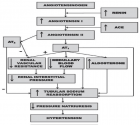
Figure 1
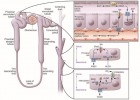
Figure 2

Figure 3
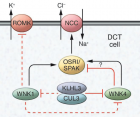
Figure 4

Figure 5
Similar Articles
-
Sex Differences in Hypertension: A Question worth Asking?Massimo Leggio*,Mario Lombardi,Paolo Severi,Andrea Mazza,Elisa Caldarone,Massimo Armeni,Stefania D’Emidio,Maria Grazia Bendini. Sex Differences in Hypertension: A Question worth Asking? . . 2017 doi: 10.29328/journal.ach.1001001; 1: 001-005
-
The lifestyle modification effectiveness in reducing Hypertension in a Brazilian Community: From the epigenetic basis of Ancestral Survival to the Contemporary Lifestyle and Public Health InitiativesRoberto Carlos Burini*,Hugo Tadashi Kano,Mariana Santoro Nakagaki,Caroline das Neves Mendes Nunes,Franz Homero Paganini Burini. The lifestyle modification effectiveness in reducing Hypertension in a Brazilian Community: From the epigenetic basis of Ancestral Survival to the Contemporary Lifestyle and Public Health Initiatives. . 2017 doi: 10.29328/journal.ach.1001003; 1: 010-031
-
Systolic Blood Pressure DeterminantsRabindra Nath Das*. Systolic Blood Pressure Determinants. . 2017 doi: 10.29328/journal.ach.1001004; 1: 032-038
-
Does serum uric acid play a protective role against tissue damage in cardiovascular and metabolic diseases?Alexander E Berezin*. Does serum uric acid play a protective role against tissue damage in cardiovascular and metabolic diseases?. . 2017 doi: 10.29328/journal.ach.1001005; 1: 039-041
-
Treating Blood Hypertension in a Brazilian Community: Moving from Reactive Homeostatic Model to Proactive Allostatic HealthcareRoberto Carlos Burini*,Mariana Santoro Nakagaki,Edilaine Michelin,Franz Homero Paganini Burini. Treating Blood Hypertension in a Brazilian Community: Moving from Reactive Homeostatic Model to Proactive Allostatic Healthcare. . 2018 doi: 10.29328/journal.ach.1001006; 2: 001-016
-
Role of Home Blood Pressure Monitoring in Overcoming Therapeutic Inertia and Improving Hypertension Control in MexicoMartin Rosas Peralta*,Hector Galvan Oseguera,Jose Manuel Enciso Muñoz,ANCAM group for HBPM. Role of Home Blood Pressure Monitoring in Overcoming Therapeutic Inertia and Improving Hypertension Control in Mexico. . 2018 doi: 10.29328/journal.ach.1001007; 2: 017-023
-
What is new in Hypertension of Mexico 2018? -Impact of the new classification of high blood pressure in adults from American College of Cardiology/American Heart Association (ACC/AHA)Gabriela Borrayo-Sánchez*,Martin Rosas-Peralta,Janaí Santiago-López,Erick Ramirez Árias,Rosalba García Méndez,Victor Hugo Borja-Aburto,Ana Carolina Sepúlveda-Vildósola,José de Jesús Arriaga-Dávila. What is new in Hypertension of Mexico 2018? -Impact of the new classification of high blood pressure in adults from American College of Cardiology/American Heart Association (ACC/AHA) . . 2018 doi: 10.29328/journal.ach.1001008; 2: 024-030
-
Guidelines that are just for guidanceSwethika Sundaravel*,Jonathan Nieves,Seth Baum. Guidelines that are just for guidance . . 2018 doi: 10.29328/journal.ach.1001009; 2: 031-037
-
Cardiovascular risk reduction: Past, present and future in MexicoGabriela Borrayo-Sánchez*,Martin Rosas-Peralta,Erick Ramírez-Arias,Gladys M Jiménez-Genchi,Martha Alicia Hernández-Gonzále,Rafael Barraza-Félix,Lidia Evangelina Betacourt-Hernández,ocio Camacho-Casillas,Rodolfo Parra-Michel,Héctor David Martínez Chapa,José de Jesús Arriaga-Dávila. Cardiovascular risk reduction: Past, present and future in Mexico. . 2018 doi: 10.29328/journal.ach.1001010; 2: 038-047
-
Role of the Kidneys in the Regulation of Intra-and Extra-Renal Blood PressureSeriki A Samue*,Adebayo O Francis,Odetola O Anthony. Role of the Kidneys in the Regulation of Intra-and Extra-Renal Blood Pressure. . 2018 doi: 10.29328/journal.ach.1001011; 2: 048-058
Recently Viewed
-
Development of qualitative GC MS method for simultaneous identification of PM-CCM a modified illicit drugs preparation and its modern-day application in drug-facilitated crimesBhagat Singh*,Satish R Nailkar,Chetansen A Bhadkambekar,Suneel Prajapati,Sukhminder Kaur. Development of qualitative GC MS method for simultaneous identification of PM-CCM a modified illicit drugs preparation and its modern-day application in drug-facilitated crimes. J Forensic Sci Res. 2023: doi: 10.29328/journal.jfsr.1001043; 7: 004-010
-
A Gateway to Metal Resistance: Bacterial Response to Heavy Metal Toxicity in the Biological EnvironmentLoai Aljerf*,Nuha AlMasri. A Gateway to Metal Resistance: Bacterial Response to Heavy Metal Toxicity in the Biological Environment. Ann Adv Chem. 2018: doi: 10.29328/journal.aac.1001012; 2: 032-044
-
Obesity in Patients with Chronic Obstructive Pulmonary Disease as a Separate Clinical PhenotypeDaria A Prokonich*, Tatiana V Saprina, Ekaterina B Bukreeva. Obesity in Patients with Chronic Obstructive Pulmonary Disease as a Separate Clinical Phenotype. J Pulmonol Respir Res. 2024: doi: 10.29328/journal.jprr.1001060; 8: 053-055
-
Current Practices for Severe Alpha-1 Antitrypsin Deficiency Associated COPD and EmphysemaMJ Nicholson*, M Seigo. Current Practices for Severe Alpha-1 Antitrypsin Deficiency Associated COPD and Emphysema. J Pulmonol Respir Res. 2024: doi: 10.29328/journal.jprr.1001058; 8: 044-047
-
Navigating Neurodegenerative Disorders: A Comprehensive Review of Current and Emerging Therapies for Neurodegenerative DisordersShashikant Kharat*, Sanjana Mali*, Gayatri Korade, Rakhi Gaykar. Navigating Neurodegenerative Disorders: A Comprehensive Review of Current and Emerging Therapies for Neurodegenerative Disorders. J Neurosci Neurol Disord. 2024: doi: 10.29328/journal.jnnd.1001095; 8: 033-046
Most Viewed
-
Evaluation of Biostimulants Based on Recovered Protein Hydrolysates from Animal By-products as Plant Growth EnhancersH Pérez-Aguilar*, M Lacruz-Asaro, F Arán-Ais. Evaluation of Biostimulants Based on Recovered Protein Hydrolysates from Animal By-products as Plant Growth Enhancers. J Plant Sci Phytopathol. 2023 doi: 10.29328/journal.jpsp.1001104; 7: 042-047
-
Sinonasal Myxoma Extending into the Orbit in a 4-Year Old: A Case PresentationJulian A Purrinos*, Ramzi Younis. Sinonasal Myxoma Extending into the Orbit in a 4-Year Old: A Case Presentation. Arch Case Rep. 2024 doi: 10.29328/journal.acr.1001099; 8: 075-077
-
Feasibility study of magnetic sensing for detecting single-neuron action potentialsDenis Tonini,Kai Wu,Renata Saha,Jian-Ping Wang*. Feasibility study of magnetic sensing for detecting single-neuron action potentials. Ann Biomed Sci Eng. 2022 doi: 10.29328/journal.abse.1001018; 6: 019-029
-
Pediatric Dysgerminoma: Unveiling a Rare Ovarian TumorFaten Limaiem*, Khalil Saffar, Ahmed Halouani. Pediatric Dysgerminoma: Unveiling a Rare Ovarian Tumor. Arch Case Rep. 2024 doi: 10.29328/journal.acr.1001087; 8: 010-013
-
Physical activity can change the physiological and psychological circumstances during COVID-19 pandemic: A narrative reviewKhashayar Maroufi*. Physical activity can change the physiological and psychological circumstances during COVID-19 pandemic: A narrative review. J Sports Med Ther. 2021 doi: 10.29328/journal.jsmt.1001051; 6: 001-007

HSPI: We're glad you're here. Please click "create a new Query" if you are a new visitor to our website and need further information from us.
If you are already a member of our network and need to keep track of any developments regarding a question you have already submitted, click "take me to my Query."







